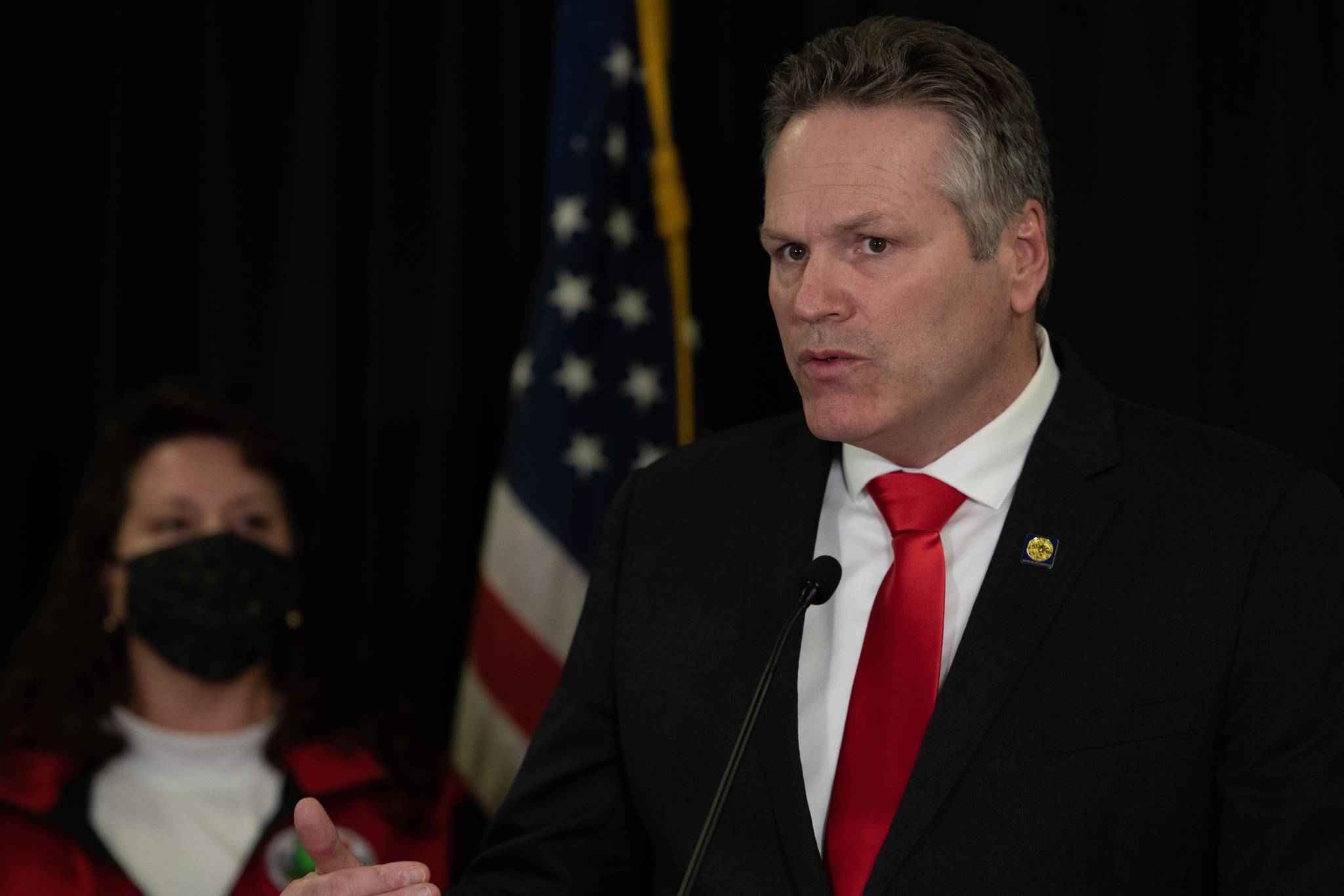The state of Alaska intends to begin managing more than 800,000 miles of rivers and 30 million acres of lakes, Gov. Mike Dunleavy said. Dunleavy announced Friday afternoon that the state is reaching out to federal authorities to begin the transfer of management.
Dunleavy said Alaska’s right to manage state lands had been denied for too long, and the state expects to work with federal partners to transfer management of the land.
“The State of Alaska will not wait any longer for the Federal government to fulfill its promises,” Dunleavy wrote in a letter to President Joe Biden. “We are claiming ownership interests in submerged lands across the state for the benefit of Alaskans.”
The state’s right to the lands was affirmed unanimously in the U.S. Supreme Court in the 2019 Sturgeon v. Frost case, Dunleavy said, but federal authorities have not fully cooperated with the state. Dunleavy called the discussions with the Department of the Interior, “an exercise in bureaucratic foot-dragging.”
The governor made the announcement in a news conference from Anchorage Friday afternoon. He was joined by Senate President Peter Micciche, R-Soldotna; Sen. Josh Revak, R-Anchorage; and John Sturgeon, the Fairbanks hunter at the center of the court case.
National park rangers told Sturgeon in 2007 he couldn’t operate a hovercraft on a waterway within Yukon-Charley Rivers National Preserve, but several lawsuits and two unanimous decisions in the U.S. Supreme Court came down on his side. The latest decision came in March 2019 and affirmed that while the federal government has the right to the uplands in federally-owned areas, the state owns and manages the submerged lands.
Dunleavy said the Alaska Department of Law had taken time to review the court’s decision and was now taking action to assert the state’s rights. To that end, the governor and the Alaska Department of Natural Resources announced the Unlocking Alaska Initiative, which will feature a website and interactive map Alaskans can use to inform the state how they use the state’s waterways. The state will use that information to protect Alaskan’s rights to use those waterways, Dunleavy said.
[Alaska moose hunter can ‘rev up’ his hovercraft, U.S. Supreme Court rules]
Dunleavy said the state wants Alaskans to submit information regarding access to waterways and interactions with federal authorities. If necessary, the state is willing to go to court on behalf of an individual Alaskan against the federal government, the governor said.
“If you are ticketed, we want to know about it,” said Jim Walker, a manager with DNR who presented the interactive map at the conference. “We will investigate it, and if circumstances warrant we will reach out and explain that (federal agencies) are overreaching their authority.”
There a likely to be little change for Alaskans using those waterways Dunleavy said at the conference, saying the state intended to work with federal partners for a smooth transition of management.
Dunleavy said at the conference all permits issued by state and federal authorities would be honored, and there should be no disruption to businesses that use waterways. The governor did not say if increased state management of waterways would add costs to the state or if any staff would have to be hired.
Sturgeon said his story was an example of the need to fight for one’s rights.
“Simply put, freedom is not free,” Sturgeon said. “Not only on the battlegrounds but on our own soil as well.”
The reporting website is expected to be active in April, DNR Commissioner Corrie Fiege said at the conference.
“Our state will not tolerate federal officials or federal action attempting to subvert the clear mandate of the court,” Dunleavy’s letter to the president said. “We can resolve our disputes without federal officers drawing their weapons on law-abiding Alaskans exercising their constitutional rights.”
Dunleavy said at the news conference he had discussed a range of issues with former President Trump and hoped to have a series of discussions with President Biden as well.
The White House did not immediately respond to request for comment.
• Contact reporter Peter Segall at psegall@juneauempire.com. Follow him on Twitter at @SegallJnuEmpire.

